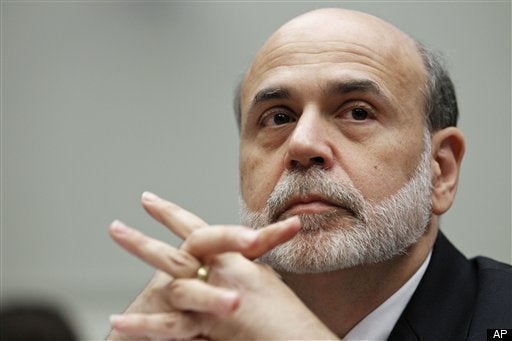
 WASHINGTON (By Pedro Nicolaci da Costa) - The Federal Reserve looks set to embark on a hotly debated second round of monetary easing next week, but much uncertainty surrounds the scope and pace of bond purchases by the U.S. central bank.
WASHINGTON (By Pedro Nicolaci da Costa) - The Federal Reserve looks set to embark on a hotly debated second round of monetary easing next week, but much uncertainty surrounds the scope and pace of bond purchases by the U.S. central bank.
Market expectations have centered around an initial commitment to buy at least $500 billion in Treasury debt over five months in an effort to spur lending and support an economic recovery that is too weak to tame high unemployment.
Further muddying the outlook, Fed officials have offered conflicting signals on their policy predilections in recent weeks, with some pushing for a very aggressive stimulus and others highly skeptical of any additional accommodation.
This makes it harder to gauge where the ultimate consensus will settle, though most analysts assume Fed Chairman Ben Bernanke's dovish leanings will carry the day.
Here are some ways in which next week's decision might play out:
$500 BILLION OVER FIVE MONTHS, HINTS OF MORE
This is the base-case scenario for financial markets -- investors may have already priced in even more, in fact. However, any disappointment at the headline figure would likely be more than offset by any nod to the possibility of further purchases if conditions warrant. That would be interpreted as an open-ended promise to do whatever it takes to ensure the recovery is on track and spark rallies in U.S. stocks and government bonds. The dollar, which has been gaining ground this month, would suffer.
$750 BILLION TO $1 TRILLION, HINTS OF MORE
The Bernanke Fed has shown a propensity for erring on the side of going big. This is based on the notion that policy acts with a lag, and that fighting inflation is easier than battling deflation. The Fed could choose to go beyond market expectations in order to build in an extra "announcement effect," in the same way that intermeeting rate cuts are believed to offer more bang for the buck. This would lead to a sharp rally in riskier assets like stocks and emerging market bonds. Commodities would also rise sharply as investors worry about the possibility of an unruly dollar decline.
OPEN ENDED, WITH NO UPFRONT COMMITMENT
Given opposition within the FOMC from hawks, it is not inconceivable that the Fed will find it hard to settle on a large upfront commitment. Instead, the Fed could announce purchases of about $100 billion a month, a figure that has already been cited by at least two top Fed officials, but hint at intentions to do more as economic conditions evolve. This approach might have the added benefit of helping to quell concerns from other countries that the United States was engaged in competitive devaluation of its currency. Market reaction to this outcome is harder to predict and would depend greatly on how the Fed characterizes the economy in its policy statement.
$500 BILLION TO $750 BILLION, WITH NO HINT OF MORE
Perhaps the best way to win over skeptics is not to limit the initial amount of easing but rather to put a cap on its ultimate size. With Fed credit to the banking system already at $2.3 trillion, triple pre-crisis levels, some officials worry that an eventual exit from this ultra-easy stance will be made increasingly difficult with a larger balance sheet. However, it is difficult to imagine the Fed would embark in such an unorthodox policy without giving itself the flexibility to follow through on its efforts to spur a sustainable recovery.
A SMALL, FINITE COMMITMENT
This is the least likely outcome. Markets have not priced in a significant easing in a vacuum. Fed officials, including Bernanke, have been careful to telegraph the central bank's intentions. By disappointing these expectations so severely, the Fed would risk undoing the lowered yields garnered by jawboning alone, potentially jeopardizing an already fragile recovery. The dollar would benefit, but at the expense of bonds, stocks and emerging market securities.
Copyright 2010 Thomson Reuters. Click for Restrictions.